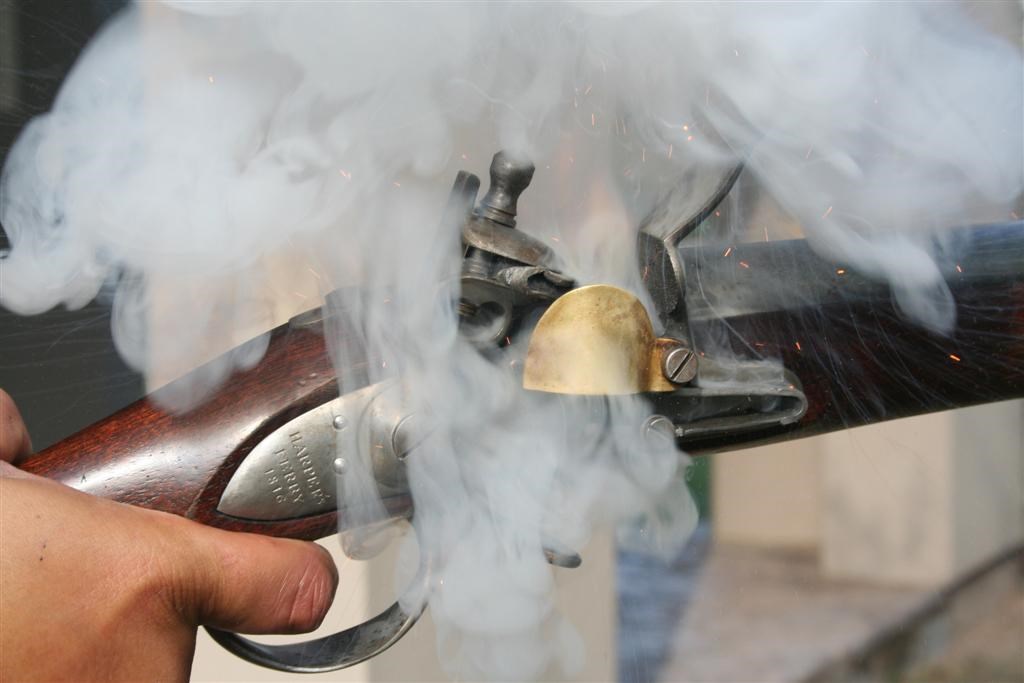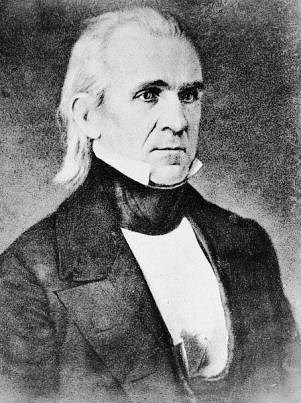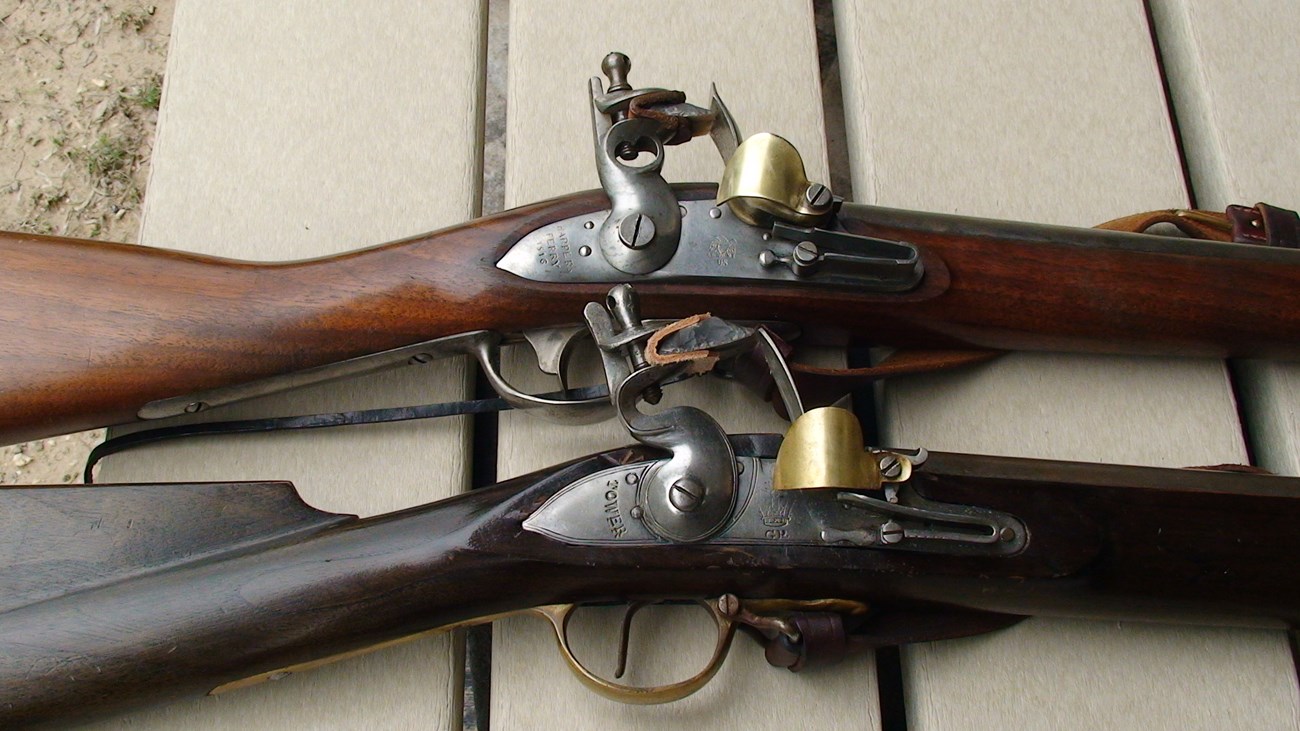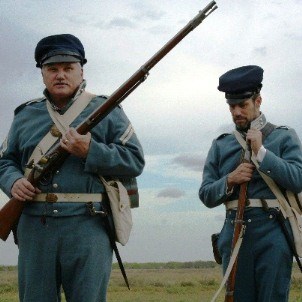
NPS (public domain) A Soldier's Best FriendA simple weapon by today's standards, the flintlock musket was the primary weapon of infantrymen during the U.S.-Mexican War. It was here at Palo Alto Battlefield the first angry shots of the war sounded on May 8, 1846. Though muskets saw limited use during the battle, they saw much more action in later engagements. Eventually, some of the muskets present at Palo Alto would make their way to Mexico City when the U.S. Army captured the Mexican capital in September of 1847. In the hands of U.S. and Mexican soldiers, the flintlock musket was both a giver and taker of life. An instrument of war made of wood and steel, it was often the only thing standing between an early grave or living another day. The musket was a constant companion of the infantryman, at times even sharing a bedroll with the soldier. The weapon employed a simple firing mechanism relying on a piece of flint crashing down on a steel plate. The resulting shower of red-hot sparks ignited gunpowder held in a shallow pan on the side of the lock, setting off the main charge inside. 
Library of Congress (no known restrictions) A Grand VisionWhy were man and musket here at Palo Alto in the first place? Some attribute it to the desire of President James K. Polk to free the U.S. from its continental confinement. In the U.S. presidential election of 1844, Polk ran on a platform favoring annexation of Texas and territorial expansion. Before President Polk left office, he would realize his vision, though not before the U.S. and Mexico waged war on each other. Peace Comes With a PriceThe signing of the Treaty of Guadalupe Hidalgo in 1848 ended the war. The boundary issue between Texas and Mexico was finalized. The U.S. also acquired nearly one million square miles of territory from Mexico--nearly half of its national territory. Polk had succeeded in stretching the boundaries of the U.S. from sea to shining sea. 
NPS (public domain) Tools of the TradeThere were many instances of Mexican infantrymen, wary of their muskets, firing from the hip to avoid a possible backfire occurring so close to their face. The very thing a soldado had to defend him with was capable of rewarding him with a fate similar to one given by an enemy musket. U.S. infantrymen fared better than their Mexican counterparts. To feed the U.S. war effort, the armories at Harpers Ferry and Springfield churned out thousands of Model 1816 muskets. Armed with newer, more reliable weapons, U.S. infantrymen did not worry about firing from the hip. They could properly aim and fire their muskets straight and true. Well, as much as can be expected with a musket. 
NPS (public domain) Simple But ComplexWhile the musket itself is a simple weapon, its operation is not. The loading and firing drill for U.S. troops called for twelve separate motions - the Mexican drill called for eleven. To stand completely exposed and under a withering fire requires a certain amount of composure. This was shown by the Mexican Army's Tampico Battalion at the Battle of Resaca de la Palma. Those "brave spirits fought on until all were cut down." Many times throughout the war, the courage and determination of soldiers on the field of battle drew praise from friend and foe alike. Well-TraveledMany of the muskets present at the Battle of Palo Alto made long journeys. Many travelled by ship from the east coast of the U.S., landing at Corpus Christi before marching down to the Rio Grande. Others came from the interior of Mexico on long marches from as far away as Monterrey some 200 miles away. A Jouney's EndSome found new owners as their former masters succumbed to the perils of war. Others shared their master's fate, mouths silenced forever, never again sending forth their destructive retort. Only a few Mexican War era muskets survive today and the soldiers who wielded them are long departed. Yet the profound impact both had on the U.S. and Mexico continues to reverberate through both nations. |
Last updated: June 22, 2018
